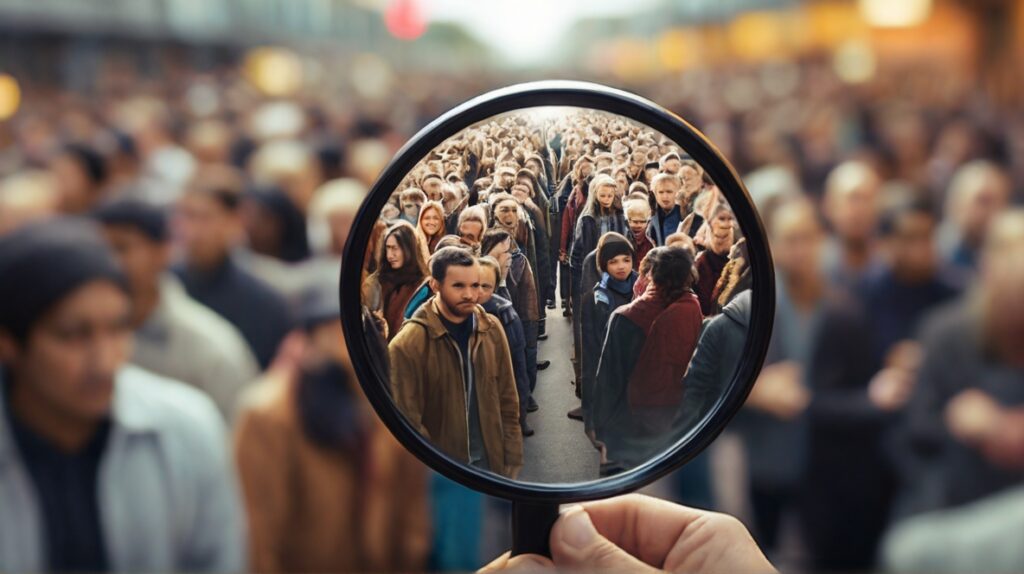
Imagine sifting through a box of apples, meticulously picking only the reddest, ripest ones. You proudly present your bounty, declaring, “See? All apples are perfect!” But hold on, friend. You’ve fallen victim to a mischievous trickster in the world of data and research: selection bias.
Selection bias, in simple terms, is when the way we choose data or participants skews our understanding of a situation. It’s like looking at the world through a stained-glass window, where only certain colors shine through, painting a distorted picture. This seemingly harmless error can have significant consequences, influencing everything from our daily decisions to major policy directions.
Unveiling the Culprits: Where Does Selection Bias Lurk?
Selection bias can sneak into your data in various ways, like a stealthy ninja. Let’s meet some of its common disguises:
1. The Convenience Trap: Remember that study concluding everyone loves kale chips? Yeah, turns out it only surveyed health food festival attendees. Convenience often dictates who participates, leading to samples skewed towards specific demographics or interests, failing to represent the broader population.
2. The Self-Selection Shuffle: Have you ever seen an online poll about “Do you like broccoli?” flooded with “Ew, gross!” responses? People with strong opinions are more likely to participate, creating a biased view. This self-selection can occur in surveys, volunteer studies, and even online reviews, painting an inaccurate picture of overall sentiment.
3. The Missing Data Dilemma: Imagine a study on the effectiveness of a new exercise program, but it excludes participants who dropped out due to difficulty. The results might overestimate the program’s benefits, ignoring crucial information about its real-world applicability. Missing data, whether intentional or unintentional, can significantly bias findings.
Real-World Examples: Where Bias Bites
The consequences of selection bias extend far beyond just skewed opinions about kale chips. Let’s explore some real-world scenarios where it can have serious implications:
1. Medicine & Health: A study concluding a new drug has minimal side effects might only include low-risk patients, excluding those with potential sensitivities. This could lead to underestimating the drug’s true risk profile, impacting patient safety.
2. Social Media & News: Algorithms that personalize your feed based on your past interactions can create echo chambers, where you’re primarily exposed to information confirming your existing beliefs. This limits your exposure to diverse perspectives and hinders critical thinking.
3. Hiring & Recruitment: If a company relies solely on referrals for hiring, it might miss out on diverse talent pools, perpetuating existing biases based on networks and demographics. This can lead to missed opportunities for innovation and limit inclusivity within the organization.
Combating the Bias: Tools for a Clearer View
So, how do we combat this sneaky villain and gain a clearer picture of the world? Here are some antidotes to selection bias:
1. Embrace Randomness: Random sampling, where each individual has an equal chance of being chosen, is the gold standard for minimizing bias. This ensures your sample reflects the diversity of the population you’re interested in.
2. Consider Representativeness: When you can’t randomize, actively ensure your sample reflects the characteristics of the population you’re studying. This might involve quotas, targeted recruitment, or weighting data to adjust for imbalances.
3. Be Transparent about Limitations: Acknowledge the potential for bias in your data and methods. Discuss how you tried to minimize it and what limitations remain. This fosters trust and allows others to critically evaluate your findings.
4. Seek Diverse Perspectives: Don’t rely on a single source of data or information. Look for studies with different designs, consult experts with varied viewpoints, and consider alternative explanations for your findings.
By understanding and addressing selection bias, we can move towards a more nuanced and accurate understanding of the world around us. Remember, the world is richer and more complex than the picture painted by a single, biased lens. Let’s strive to see it in all its beautiful, messy, and representative glory!
